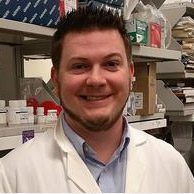
“Predicting relapse and response to chemotherapy in sarcoma.” | $49,000

Principal Investigator: Amy Skubitz, PhD – Professor of Laboratory Medicine and Pathology, Professor of Obstetrics, Gynecology and Women’s Health, University of Minnesota
Summary: Predicting the behavior of a sarcoma tumor in a patient is of critical importance in their care. When a primary tumor is removed, the risk of the development of metastatic disease is the most important factor in their survival. At present, the methods to predict recurrence are not very accurate. In our previous studies, we developed gene signatures that appear to distinguish differences in the probability of developing metastases in patients with several types of sarcoma. To apply this in routine care, the results need to be confirmed in a separate study. Therefore, we plan to generate gene expression data using sarcoma tumors from a new group of patients with soft tissue sarcomas who are at high risk of recurrence, and did not get pre- or post-operative chemotherapy. We will analyze the data and correlate the findings with long-term follow-up, where the development of metastases or local recurrence are known. In addition, we will determine the gene expression of tumors from sarcoma patients who were later treated with doxorubicin when the tumor recurred, and in whom the response to the doxorubicin was documented. This subset analysis may allow the development of a predictor of doxorubicin response as well. The results of this study will serve to substantiate the potential of gene expression patterns to predict recurrence in sarcomas and rapidly move this technology to the clinic.
“Retrospective and Prospective Comparison of Prognostic Transcriptional Biomarkers in Osteosarcoma using NanoString RNA profiling.” | $49,000

Principal Investigator: Aaron Sarver, PhD – Coordinator/ Bioinformatics Research Scientist, University of Minnesota
Collaborators: Edward Cheng MD, Professor, Department of Orthopaedic Surgery, University of Minnesota
Summary: Despite extensive advances in genomic characterization, little of this work has translated to improved care for patients who present with osteosarcoma (OS). The osteosarcoma genomic working group at the Masonic Cancer center has shown that tumors with specific transcriptional features are associated with poor outcomes in several recent publications and our work has been validated by external groups. Currently, prognostic tests for outcome based on transcript levels are not available for osteosarcoma, although they are generally utilized for a number of other cancers.
Separately, the University of Minnesota Department of Orthopedic Surgery has kept a patient database containing all the OS cases that have been treated at the U of M back to 1965. Within this database is information from more than 400 patients treated for osteosarcoma. FFPE sections are available for many of these patients. Recently the NanoString RNA transcript profiling platform has been developed and allows accurate quantification of RNA levels in FFPE sections. We request funding to use our recent molecular discoveries into the biology of osteosarcoma to leverage this powerful new sequencing technology in order to examine actual OS patient samples collected from the clinic. We will first compare the prognostic potential of these transcriptional differences associated with outcome in a retrospective patient cohort and secondarily in a prospective patient cohort after resection.
These results will be used to assess which transcriptional markers are most associated with outcome in order to generate a more broadly useful diagnostic test for prognosis in OS. This collaboration is ideal because it will allow a genomic sequencing expert to work directly with an MD surgeon who is treating patients and has access to the full pathology reports. We believe that this will improve patient care and serve as a model for the bench to bedside translation of genomic information.
Currently prognostic tests for outcome based on transcript levels are not available for osteosarcoma, although they are generally utilized for a number of other tumor types.
The goal of this project is to carry out NanoString sequencing in order to:
- Validate the prognostic potential of transcript levels to determine patient outcome in OS
- Determine which marker or combination of marker is best performing
- Explore how to bring transcript level prognostic associations into the osteosarcoma clinical
“Reprogramming cholesterol metabolism in sarcomas using adrenergic receptor antagonists.” | $25,000

Principal Investigator: Erin B Dickerson, PhD, – Associate Professor, Department of Veterinary Clinical Sciences, University of Minnesota
Summary: Vascular sarcomas (e.g. angiosarcomas, hemangiosarcomas, and hemangioendotheliomas) represent a therapeutic challenge since new treatment approaches have not occurred in several decades. We and others recently published reports showing a remarkable 100% response rate (complete and partial responses) of angiosarcoma patients to propranolol, a beta blocker commonly used to treat high blood pressure. The clinical effectiveness of propranolol against angiosarcomas has led to Orphan Drug Designation for propranolol in the EU and accelerated approval in the US for the treatment of soft tissue sarcomas. While encouraging, tumor progression eventually recurs in all patients, underscoring the need to gain a better understanding of the mechanistic impact of propranolol on theses tumors. We recently discovered that angiosarcomas and hemangiosarcomas rely on extracellular cholesterol and cholesterol metabolites (oxysterols) for cell viability and tumor growth. Our data suggest that propranolol causes cholesterol and oxysterols to accumulate in cell lysosomes, preventing oxysterols from binding to the liver X receptor (LXR) and activating signals important for cell viability. We will test the hypothesis that propranolol prevents oxysterols from activating LXRs, limiting tumor cell viability and enhancing sensitivity to chemotherapy. We will also determine whether oxysterols accelerate tumor growth. We expect to develop a more detailed understanding of propranolol’s action on how the LXR/ oxysterol axis impacts sarcoma growth. Because we have already discovered similar responses to propranolol by other sarcoma types we plan to expand our findings to other sarcomas.
“Identification of novel drivers of Ewing Sarcoma through engineered transformation of cells with differing levels of African admixture.” | $25,000

Principal Investigator: Beau Webber, PhD – Assistant Professor, Division of Pediatric Hematology and Oncology, University of Minnesota
Summary: Ewing sarcoma (ES) is a pediatric cancer that occurs nearly exclusively among individuals with substantial European ancestry, displaying one of the widest disparities in incidence compared with people of African or Asian ancestry. Although suggestive of genetic predisposition, ES is not linked to any high-penetrance genetic syndromes. Strikingly, 90% of ES tumors harbor a translocation-mediated fusion of the EWS and FLI1 genes, creating the potent EWS-FLI1 oncoprotein. EWS-FLI1 binds specific repeated DNA sequences adjacent to a broad set of genes, disregulating their function and initiating a cellular program of oncogenic growth, metabolism, and migration. The degree of disregulation caused by EWS-FLI1 correlates with the length of these specific repeated DNA sequences, which differ based on individual ancestry. We hypothesize that disparity in ES occurrence between individuals of European and African ancestry is linked to differing lengths of these specific repeated sequences in each population. We will utilize cutting-edge induced pluripotent stem cell (iPSC)-based tumor modeling and genetic engineering to test our hypothesis at a mechanistic level not possible using any other strategy – namely, we will induce EWS-FLI1 in iPSC derived from individuals with genetically-determined ancestry ranging from 100% African to 100% European. The results of this study will provide crucial insight into the role that genomic context plays in susceptibility to ES, and will drive future research by identifying new, actionable drug targets for validation and therapeutic targeting. As fusion oncoproteins are implicated in several pediatric sarcomas, our strategy and findings are likely to have broad applications beyond ES.

